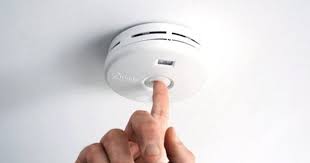- Home
- News
- What’s On
- Activities for Children
- Arts & Crafts
- Autos and Bikes
- Business events
- Car Boot & Auctions
- Charity events
- Churches & Religious
- Comedy
- Dance
- Days out & Local interest
- Education
- Exhibition
- Film
- Gardening & Horticulture
- Health
- Markets & Fairs
- Music
- Nature & Environment
- Spiritual
- Sport
- Talks and Discussions
- Theatre and Drama
- Business
- Local Information
- Jobs
- Deaths
- Charity events
- Contact Us
Smoke alarms save lives

Smoke alarms save lives is the message from Cheshire Fire and Rescue Service as they urge members of the public to purchase a smoke alarm.
As part of a national month-long focus the Service is raising awareness of the importance of smoke alarms, as well as their top tips when purchasing, fitting and maintaining it.
For maximum protection a smoke alarm should be fitted in every room of your house except the bathroom, kitchen and garage. And a heat detector should be fitted in the kitchen. For absolute minimum protection, at least one smoke alarm should be fitted on each level of your house.
Head of the Service’s Prevention Department, Nick Evans, said “Firefighters and Prevention staff regularly check that households have appropriate smoke alarms fitted as part of our home safety visits and Safe and Well programme. However, campaigns like this help us to further raise awareness of the importance of buying one and fitting it properly. They are relatively cheap to buy and having them fitted can make the difference between life and death, as early detection will provide the vital time that you need to escape in the event of a fire.”
There are currently two types of smoke alarms on the market – ionisation and optical. When deciding on which type of smoke alarms to buy, you should consider which type of fire is more likely to occur in your home. Any smoke alarm that you buy should meet British Standard BS EN14604: 2005 and carry the well-known Kitemark.
Once you have purchased your smoke alarm, it will need regular maintenance:
- If it’s not a ten-year alarm once a year replace the battery – this is also applicable for mains powered smoke alarms that have a battery back-up.
- Once a week check the alarm by pressing the test button.
- Once a month vacuum and wipe the smoke alarm casing to ensure dust isn’t blocking the sensor chamber.
- If your smoke alarm is making an intermittent bleeping/chirping noise, please follow these steps:
- Check that your smoke alarm is definitely the source of the bleeping/chirping; make sure the noise isn’t coming from another alarm (smoke/carbon monoxide/gas/burglar alarm) by process of elimination.
- Clean the alarm as per the instructions above.
- Test the alarm by pressing the ‘test’ button.
- Change the battery (unless it’s a ten-year alarm).
- For mains powered smoke alarms please ensure they are checked/serviced by a registered electrician.
For more information on the types of smoke alarms, advice on how to fit and maintain them visit: https://www.cheshirefire.gov.uk/public-safety/smoke-alarms-for-homes

You must be logged in to post a comment Login